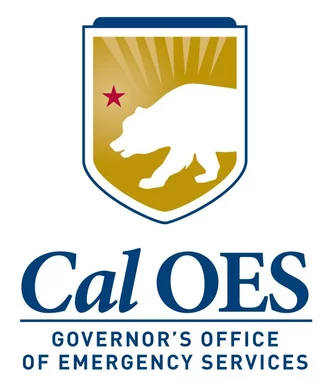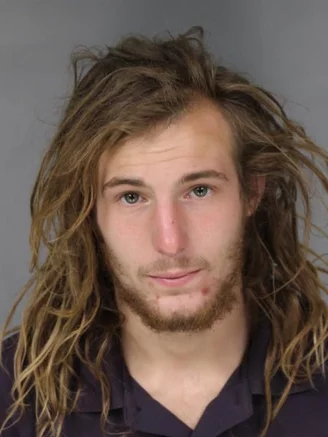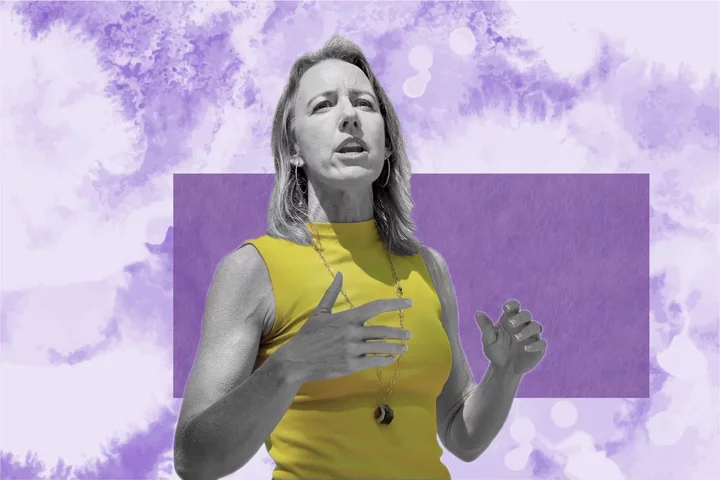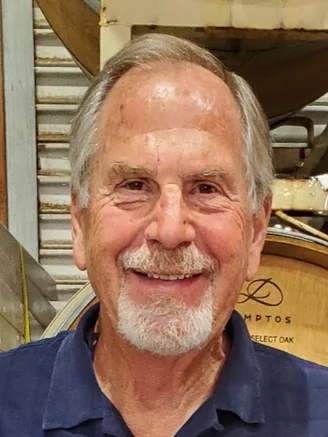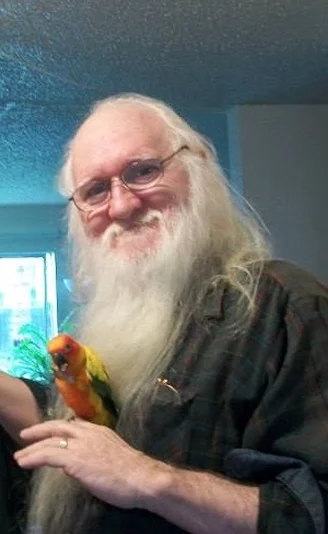OBITUARY: Raymond Dean Miller, 1945-2023
LoCO Staff / Friday, May 26, 2023 @ 6:56 a.m. / Obits
Raymond Dean Miller was born October 22, 1945 to Paul and Adeline Miller in Lansing, Illinois. His family meant everything to him, so when he left them behind to move to California, he called them every Sunday and holiday. His oldest daughter Shelly was born in Eureka in 1968.
In 1970, he met Gaylene and her son Lorne. He and Gaylene married March 26, 1971. She was the love of his life. They soon had a daughter of their own, Kathy, born in 1972.
Growing up with his four siblings — Deb, Rose, Judy and brother Paul — mischief was sought on a regular basis, especially between the two brothers, and they always enjoyed the company of some very colorful characters they called friends. He also loved his nieces and nephews and their families very dearly, Richie, Dawn, Brian, Richie, Melissa, Lennie, Lisa Laura and Angie. Once his family in California was grown, he took the opportunity, with Gaylene, to move back east to Indiana to spend time with and care for his parents and Uncle Harry in their later years.
He thoroughly enjoyed connecting with others and was a man of monumental integrity, strength, love, humor and loyalty within every community he was a part of. He never said no to a person in need or avoided a job that need to be done, whether it entailed rebuilding an engine, working long hours at the Simpson Arcata Bottoms mill, or being an epic father and a more epic grandfather, which he always said he wished he had done first!! His adoring Grandchildren include Sophia, Sean, Raylene, Jeremy, Kayli, Branden, Caitlin, Kristin and Mike. He also cared endlessly for Gaylene as she was taken by cancer, passing in 2016.
He raised his family to believe that they were capable of anything and broke his body daily to make their dream reality. He never lied unless it was about his own discomfort but he did tell wild stores with giggles in his eyes. He rarely yelled, unless he was cheering someone on and hurting another living creature was beyond his capacity. His giggle brought people and parties to life and even led his lost children back to him in Great America and his love changed the world for everyone who knew him.
He passed away on October 7, 2022, in the loving care of one of his truest friends, Jeff Shidler, who never left his side even through the hardest moments. His family will be holding a graveside service at Oceanview Cemetary in Eureka on June 16 at 2:30 p.m. to celebrate the life and passing of a hero and his granddaughters favorite man. Please join us.
BOOKED
Today: 9 felonies, 6 misdemeanors, 0 infractions
JUDGED
Humboldt County Superior Court Calendar: Today
CHP REPORTS
3430 Redwood Dr (HM office): Trfc Collision-1141 Enrt
11300 Mm101 S Hum R113.00 (HM office): Traffic Hazard
Us101 N / Singley Ln (HM office): Trfc Collision-No Inj
ELSEWHERE
Governor’s Office: Governor Newsom’s statement on Valero’s Benicia refinery update
Governor’s Office: Governor Newsom announces appointments 1.6.2026
Governor’s Office: Governor Newsom lowers flags, proclaims January 7th as day of remembrance for Los Angeles fires
KINS’s Talk Shop: Talkshop January 6th, 2026 – Chris Emmons
HUMBOLDT TODAY with John Kennedy O’Connor | May 25, 2023
LoCO Staff / Thursday, May 25, 2023 @ 4:43 p.m. / Humboldt Today
Your video news roundup! Also, find below today’s Pointless Poll: What do you call the Arcata Bottoms?
ADDITIONAL READING:
- Rhode Island Man Sentenced to 25 to Life for 2022 Kneeland Murder
- Prominent Foster Parent Arrested in ‘Lewd Acts’ Investigation, North Coast Journal
- Yurok Tribe Partners With County, Courts on ‘Culturally Informed Diversion Program’ Focused on Rehabilitation
- What the Heck’s Going on With Broadway in Eureka? Caltrans’ ‘Pop-Up Demonstration,’ Explained
- FERREIRA & SON: Meet the Rancher Who’s Fighting ‘Tooth and Nail’ to Keep Arcata’s Last Remaining Dairy Alive
###
BRACE and BOLT: State Grant Funds Available to Help You Get Your House Prepped for the Next Quake
LoCO Staff / Thursday, May 25, 2023 @ 11:23 a.m. / Emergencies
Press release from the Humboldt County Sheriff’s Office:
Eligible Humboldt County homeowners in areas impacted by the Dec. 20, 2022 earthquake can now apply for grants of up to $3,000 to safeguard their homes against future earthquake damage.
Funding is available through Earthquake Brace + Bolt (EBB), a program administered by the California Residential Mitigation Program (CRMP) which is a joint powers agreement between the California Earthquake Authority (CEA) and the California Governor’s Office of Emergency Services (Cal OES).
These funds cannot be used to pay for repairs to damaged homes but can be used to protect eligible residences from experiencing the same kind of damage from future earthquakes. An EBB retrofit includes bracing the cripple walls of older houses, when present, and bolting houses to their foundation, making them less vulnerable to earthquake damage.
The registration period for this program closes on Monday, July 31.
“Older homes are particularly vulnerable to earthquake damage, so it’s important that homeowners in high seismic-hazard areas take proactive steps to reduce the risk of their home slipping off its foundation,” said Glenn Pomeroy, CEO of the California Earthquake Authority (CEA). “We recognize the enormous impact the recent earthquakes had on the local community, and it is our goal to strengthen as many homes as possible before the next big one strikes.”
Income-eligible homeowners may also qualify for supplemental grants. These grants are available for households with an income at or below $72,080 and may be able to provide up to 100% of the funds needed to cover a seismic retrofit.
Humboldt County homeowners can apply for retrofit funding at EarthquakeBraceBolt.com. At this website, homeowners can check if their house is in an EBB eligible ZIP Code, review detailed program information and begin searching for a FEMA-trained, California-licensed general contractor.
Once registration closes, participating homeowners will be selected through a random drawing and notified via email if they have been chosen or if they have been placed on the waitlist.
According to CEA, more than 1.2 million houses in high-hazard ZIP Codes are particularly vulnerable to earthquakes because of the way they were constructed. These homes are typically built before 1980, are wood framed with a raised foundation and may have a cripple wall in the crawl space under the house.
To date, EBB grants have helped nearly 20,000 homeowners retrofit their houses.
About Earthquake Brace + Bolt (EBB)
Established by the California Residential Mitigation Program, EBB offers grants to help California homeowners retrofit their houses to reduce potential damage from earthquakes. For more information, please visit EarthquakeBraceBolt.com.
About the California Residential Mitigation Program (CRMP)
CRMP was established in 2011 to help Californians strengthen their homes against damage from earthquakes. CRMP is a joint powers authority created by the California Earthquake Authority and the California Governor’s Office of Emergency Services. For more information, please visit https://www.californiaresidentialmitigationprogram.com/About-CRMP.
To learn more about available resources regarding earthquake recovery, visit humboldtgov.org/earthquake.
Rhode Island Man Sentenced to 25 to Life for 2022 Kneeland Murder
LoCO Staff / Thursday, May 25, 2023 @ 9:57 a.m. / Courts
Press release from the District Attorney’s Office:
Today, Judge Kaleb Cockrum sentenced 28-year-old Austin M. Medeiros of Rhode Island to serve 25 years to life in prison for the first-degree murder of 28-year-old Emily Lobba. Medeiros was ordered to serve an additional 6 years, four months for felony evading, theft of a vehicle, and assaultive crimes committed against other victims, including a Humboldt County Corrections Officer.
On April 3, 2022, Medeiros strangled Ms. Lobba to death while inside her Kneeland home. He proceeded to steal most of her possessions. Ms. Lobba’s caretaker encountered Medeiros at the crime scene and notified law enforcement as Medeiros fled in Ms. Lobba’s van. Despite a high-speed pursuit that followed, Medeiros reached the Arcata Community Forest where he escaped on foot. Medeiros was arrested seven days later after he stole a Santa Cruz Harbor Patrol’s boat and was caught attempting to sail away.
Medeiros was convicted of his crimes by a jury on April 27 of this year. Deputy District Attorney Candace Myers prosecuted the case with the assistance of District Attorney Investigator Martin Morris, as well as Victim/Witness Advocates Caitlyn Lahaie and Morgan Polasek. Local defense attorney Owen Tipps represented Medeiros. Humboldt County Sheriff’s Investigators Brandon Head and Scott Hicks led the investigation that ultimately brought Medeiros to justice.
District Attorney Stacey Eads said: “I commend Ms. Lobba’s caretaker for quickly alerting law enforcement of Medeiros’s crimes. Thank you to the jury for their dedication and service. May this outcome help provide Ms. Lobba’s loved ones with some sense of justice, and a path towards healing.”
###
PREVIOUSLY:
- Suspect, Victim Named in Kneeland Homicide; Public Urged to Be on the Lookout, Motorists Warned Suspect May be Attempting to Hitchhike South
- Kneeland Homicide Suspect Arrested in Santa Cruz Yesterday; Suspect Had Loaded Stolen Firearm and Mushrooms in His Possession, Sheriff’s Office Says
- Kneeland Homicide Suspect Transferred Back to Humboldt, Will Be Arraigned Next Week
- TODAY in COURT: Kneeland Murder Suspect Says He Wants to Hire His Own Lawyer
- TODAY IN COURT: Kneeland Murder Suspect Pleads Not Guilty
- Correctional Deputy Injured in Jail Assault by Kneeland Murder Suspect, Sheriff’s Office Says
- Criminal Proceedings Against Suspected Kneeland Killer Suspended; Judge Orders Psychiatric Evaluation
- TODAY in COURT: Man Who Bit Off Cop’s Thumb Gets Four Years and Change; Kneeland Murder Suspect Says He’s Not Insane, but a Doctor Disagrees; Sotolongo Jury Still Deliberating
- Case Against Greenwood Heights Murder Suspect Suspended Again While Court Seeks a Psychiatric Second Opinion
- TODAY in COURT: Mistake Delays Fortuna Teacher’s Preliminary Hearing on Child Molestation Charges; Mental Health Questions Hang Over Fortuna Terrorism Case, Kneeland Homicide
- Judge Rules That Suspect in Greenwood Heights Murder, Finally Deemed Mentally Competent, Must Stand Trial
California Lawmaker Opens Legal Fund Over Facebook Feud
Alexei Koseff / Thursday, May 25, 2023 @ 7:51 a.m. / Sacramento
State Sen. Catherine Blakespear, an Encinitas Democrat. Illustration by Miguel Gutierrez Jr.
A first-term state senator is raising money from interest groups to fight ongoing litigation related to complaints that she blocked critics on social media in her previous job as a mayor.
Sen. Catherine Blakespear, an Encinitas Democrat who was elected to the Senate in November, opened the legal defense fund at the end of January and has raised $17,500 so far, in addition to receiving legal assistance from the California Democratic Party, according to campaign finance records.
Blakespear appears to be the only legislator with an active legal defense fund. The contributions include $12,000 from the Southwest Regional Council of Carpenters and $5,500 from the Pechanga Band of Indians, both of which lobby at the state Capitol.
Blakespear declined to discuss the case in depth because it is still active, but she defended using her legislative position to fundraise for her legal bills.
“This is a politically motivated lawsuit,” Blakespear told CalMatters on Wednesday. “This is obviously related.”
The case stretches back more than a year, to April 2022, when a group of Encinitas residents who had written critical comments about then-Mayor Blakespear demanded that she unblock them from her Facebook page, according to The Coast News Group, a local news outlet in northern San Diego County.
Blakespear allowed the critics back onto her Facebook page and settled with them a month later, agreeing to issue a public apology and pay $5,000 in attorney fees. But then in September, the residents sued Blakespear — who was deep into a close race for the Senate seat — alleging that she violated the terms of the settlement by making an unsatisfactory apology and using campaign funds, instead of her own money, to pay the attorney fees.
After filing and dropping a countersuit, Blakespear sought in January to have the claim about her apology dismissed under California’s anti-SLAPP statute, which protects conduct considered free speech. She won that motion and, in a tentative ruling Monday, was awarded nearly $121,000 in attorney fees, though the complaint over how she paid the initial settlement continues.
Carla DiMare, an attorney for the plaintiffs, did not return messages seeking comment.
Blakespear had accrued more than $95,000 in unpaid bills to Olson Remcho, a prominent political law firm, as of the end of March, according to the most recent filing from her legal defense fund.
She also reported more than $45,000 in legal services from the California Democratic Party in January as non-monetary contributions. A spokesperson for the party did not respond to questions about the services. In an email, Blakespear’s attorney, Richard Rios, said only that “the California Democratic Party supported Senator Blakespear’s campaign.”
Political candidates in California cannot use their campaign funds for legal expenses that are unrelated to the primary purpose of the account, but they can open separate legal defense funds. These committees do not have traditional contribution limits; candidates can raise money “in an amount reasonably calculated to pay” their legal costs.
The Pechanga Band of Indians, which did not donate to Blakespear’s 2022 Senate campaign, gave $5,500 to her legal defense fund on March 31.
“Pechanga leadership has been impressed with the senator and is hopeful she will be a fierce advocate for the region and California,” Jacob Mejia, a spokesperson for the tribe, said in a statement. “They are helping a friend in need of help.”
The Southwest Regional Council of Carpenters small contributor committee donated $12,000 last week, after previously giving the maximum $19,400 to her Senate run. The union did not respond to requests for comment about its contribution.
###
CalMatters.org is a nonprofit, nonpartisan media venture explaining California policies and politics.
OBITUARY: Michael John Wells, 1948-2023
LoCO Staff / Thursday, May 25, 2023 @ 6:56 a.m. / Obits
Michael John Wells
Fortuna, Calif.
July 21, 1948-May 6, 2023
[NOTE: The celebration of life has been changed to the Fortuna Nazarene Church on Sat. June 24, 2022 @ 2 p.m.]
Michael John Wells was 74 years young when he was safely delivered into his heavenly inheritance and presence of his Lord and Savior, Jesus Christ. Mike reluctantly left the Queen of his Heart and wife of 25 years, Cheryl Wells at the home of his eldest son, Adam Wells, in Scottsdale, Ariz., with Cheryl, Adam and other family at his side.
Mike and Cheryl’s love affair of 27 years brought joy to others and was a wonderful example of how to love and be loved. Mike was a strong, tender, fun-loving and committed father to Adam Wells, Scottsdale, Ariz. and Brian (Stacy) Wells, Vienna, Austria and stepfather to Abe Fockaert, (Hydesville), Candice Martella (Fortuna), Hannah Bruckner, (Fortuna), Matthew Fockaert, Maggie Wells (Fortuna). Mike also was a safe and compassionate foster dad and foreign exchange student dad to many over the years. Papa was a hero, an amazing role model, and doting grandfather to 11 grandchildren ranging in the ages from 22 years old to 1 ½ years old, always pulling each close to himself and saying to each “Your ol’ Papa loves you!” To his granddaughters he would dance them around the room and add, “Your ol’ papa loves you… MY DARLIN’.” His well-loved grandchildren are, Braden and Cody Wells, Scottsdale, Ariz.; Luke and Stella Wells, Vienna, Austria; Sophia Bruckner, Chico; Jadon Bruckner, Scottsdale, Ariz.; Tobiah, Boaz, and Raanan Bruckner, Fortuna; Avery and Jayce Fockaert, Hydesville. Mike loved attending his children’s and grandchildren’s many social, educational, sports events, and performances over the years and was an active participant in cheering his family onto success and accomplishment. Mike also leaves behind his ex-wife, Kathy Philp (Ariz.) and the devoted extended family through Cheryl including his 92 year old father-in-law, Bob (Ilene) Cannon, Fortuna; and sister-in-laws (and their families), Linda (Jeff) Moot, Fortuna; Susan (Chuck) Schouw, Ariz.; Tina Cannon (Ariz.) with nieces and nephews; Kara (Sean) Deno (their 6 children) Eureka; Heather (Sean) Garcia (their 4 boys) Colo.; Chris (Ashley) Namanny, (Lorelei), Eureka; Maren (Brian) Fuller Texas, Jason (Vicki) Schouw; Kris (Nichole) Schouw (4 children) Ariz.; Melissa LaVeck (7 children) Kentucky, Bobby (Sarah) Davis (2 children) Colo.; Kim (Darren) Jacobs (3 children) Ariz.; LeAnne Moot, Eureka; Casey (Steele) Fredricksen (Ember) Wash.
Mike died after an 11-month battle with a very rare and aggressive leukemia called TPLL. He and Cheryl immediately left Fortuna to Mayo Clinic in Scottsdale, Ariz. on May 28, 2022 just 4 days after his initial diagnosis by his longtime physician and friend, Beth Ables, on her urgent recommendation to “get out of town!” Those 11 months were spent in and out of hospital treatments in Arizona and at the MD Anderson Cancer Treatment Center in Houston, Texas. Throughout this journey, Mike and Cheryl were carried with strength, courage, confidence, purpose, hope, peace and joy based in their faith in Jesus Christ their Savior, and the comfort of the scriptures in the race they were running that was “marked out for them.” (Hebrews 12) They were strengthened by many Bible verses and especially Romans 15:13:
“May the God of Hope fill you with ALL JOY And PEACE as you trust in HIM so that you will overflow with Hope by the power of the Holy Spirit.”
A grateful thank you to Adam and the boys for life with them and in the Casita for 11 months, and for sister’s Sue (Chuck) and Tina who also supplied a beautiful room just 15 min down the road along with love, attention and provision. Fortuna family was very missed, but very precious time with the Ariz. family. Cheryl’s 92 year old dad, Bob Cannon left Fortuna to Ariz. to be near the cancer battle and be of a support from Dec. 2022 and was present also when Mike took his last breath as was Cheryl’s sister Linda Moot from Fortuna at Mike’s side after she remained in Ariz. for the” last touch and go” 9 weeks. The great cloud of family, old and new friends, continued prayer and support, close contact and love gifts, including visiting from afar while displaced from Fortuna home made a very challenging year into a very blessed and special year. Special thanks to close friends who visited them in Scottsdale, Kim and Leah Price, Pastor Mark Seitz who also spent 6 days there, as well as family members who immediately responded and came when Mike was given 1 week to live. Thank you to new friends at Scottsdale Bible Church who quickly brought Mike and Cheryl into their hearts with amazing support at the beginning of this battle when Mike and Cheryl arrived in June 2022. Thank you to their Oncologist, Dr. Nathan Punwani, and all staff at Mayo clinic from amazing nurses to the cleaning staff who always made their stay in the hospital a wonderful experience. Mike and Cheryl knew that this cancer belonged not only to them but also had purpose in the lives of all of those who walked alongside them and even to all the acquaintances, friends and hospital staff they met along the way.
Mike was born on July 21, 1948 to Gerald and Alice Wells in Inglewood, Calif. whose deaths have preceded his. He was 5th born and relished his memories of being “raised by his two teenage sisters, Judy and Carolyn and their friends, and boyfriends with cars!” He loved it when his 18 yr old brother David would come home and tickle him and later gave Mike his love for social dancing. Mike’s older siblings and spouses preceding his death were Jean (Ken Kleinwachter) , David Olive, and Carolyn (Tom) Reiner. His beloved sister Judy and her high school sweetheart, and husband, Loy Coffey live in Indio, Calif. and have been very dear and close to Mike’s heart for his entire life. Adult nieces and nephews, with their children include, Paul (Pam) Kleinwachter, Wash.; John Kleinwachter, Colo., Susan (Tom) Meason, (2 boys) Colo. ; Lori (Rick) Maloney, (3 children) Calif.; Kathy (John) Vaskey (2 kids), Calif.; Lil Meyers, Ariz.; Cindy Rudd, (2 daughters) Calif.; Mark Rudd, (2 sons) Maui ; Debbie (Don) Priestly, (2 children) Calif.; Kim (Jr.) Florida, Nebraska; Jeff Coffey, Idaho, Ken (Tammy) Coffey, (2 children) , ID; Paula (Mike) Morse, (2 children) Oregon.
Mike graduated from Leuzinger High School in Lawndale, Calif. in 1967 where he had 4 years of educational and football success. He went on and completed his college education on a Football Scholarship at San Jose University, Calif.. Mike played as an offensive lineman and defensive end both in High School and College. He received All American status while at San Jose State University. Mike went on to earn his Master’s degree at San Francisco State University. Mike was a patrol officer with San Jose Police Dept when he was drafted into the military during the Vietnam conflict. Fortunately, at that time he also was recruited into the Army National Guard Reserves where he spent 6 years as a reserve officer and was able to continue to work for San Jose Police Department. Mike had continued a life long, special relationship with his partner on patrol with him, Phi (and Shelley) Rodgers. Shelley had overcome four life threatening cancer diagnoses and battles which helped inspire Mike and Cheryl with their “kick butt” attitude in how they approached their unintended journey. Cheryl was wholeheartedly grafted into this relationship and together through the years they shared policing, and national guard experiences and stories, water skiing and house boating experiences, along with many life adventures together. They always endearingly called him “Mikey.” In 1973 while in San Jose Mike met and married Kathy Iverson. In 1979, already working in the Police Training Unit with San Jose PD, Mike accepted a position at the College of the Redwoods Police Academy and Mike and Kathy moved to Eureka, Calif. where they continued to raise their two sons, Adam and Brian. During that same time Cheryl and her husband were raising their children in Eureka also. Adam, Brian, and Cheryl’s kids, Abe and Hannah went to the same schools and were also friends. After their unfortunate marital breakups, unbeknownst to them, Mike and Cheryl ran into each other and began to date for 2 years until they were married on November 21, 1997. Mike and Cheryl had known one another through the friendship of their kids so there was a familiarity with one another’s families and an understanding of each other’s core values. It was immediate electricity and attraction that they cherished throughout the life they built together.
They married in an intimate and special ceremony in the home of Dick and Jean Adams with their best friends, Dennis and Laurie McCollister standing up for them, with a circle of family and close friends and Cursillistas also celebrating that moment with them. Dick wrote a silly poem and read it at their wedding called “The Long and Short of It” which described their funny phenomenon … Mike was 6’4 and Cheryl 5’2 (and yet it worked, and on top of it working they were also a great dance couple!)
“This evening we share in their joy and love,
And pray for God’s blessings to flow from above.
Cheryl and Mike believe it’s all Heaven sent,
But here’s the true story of just how it went.
He bowed low to see the love in her eyes,
She stood “tippy toe’ because of his size.
He caught her up-face to face,
First a kiss then- fond embrace.
It was then they both came to realize,
There was nothing wrong about their difference in size.
He loved her-she loved him,
They knew this was more than just a whim.
So here at the wedding, we all wish them well.
And that ends the story I have to tell.
Obviously, this poem is a silly bit-
So it’s simply called- The Long and short of it.”
And so began 25 ½ married years together with Mike and his “Sweetie Petunia.” Mike continued with his career as Coordinator and Director of the Police Academy, and Professor of Administration of Justice courses. He was personally invested in his police academy cadets and his students, and would often take personal time to help correct their personal deficiencies in order to assist them to qualify to the next round of course. He loved teaching AJ courses and wove many of his personal experiences and funny stories into his lectures. Many would continue to greet him respectfully as Mr. Wells, 20 years into their own law enforcement career which always brought him joy and a feeling of accomplishment to help others move forward with their dreams and desired professions.
In 1997, Mike and Cheryl’s four adult children were now in college, and were beginning successful lives of their own. They settled into raising their two adopted children, Matthew and Maggie together; foster parenting together, working with developmentally challenged student populations as vendors with Redwood Coast Regional Center. They also had the pleasure of hosting foreign exchange students through Rotary International. In 2005 Mike and Cheryl had the opportunity to move from Eureka, purchase property in Fortuna, Calif. and renovate the home of their dreams through their own hard “grunt” labor, and the professional work of Cheryl’s son, Abe and his crew of AF Builders.. It was hard to leave their Eureka church and friend base that had been developed and cherished for over 36 years. But once “Ya, Ya”, Friends…always “Ya Ya” friends. In Fortuna Mike and Cheryl have spent the last 18 wonderful years of their life together, always eager to open their home, for social gatherings, small group bible studies and celebrations. “2nd Sunday” family gatherings brought joy and connection with their growing number of local relatives and oh…the children! Cheryl hopes the hospitality of the Wells will continue with the unseen presence of the man so adored, respected and loved so much.
Mike retired from College of the Redwoods after 33 years in 2012. Mike ended his career serving in various Vice President positions at CR. After a couple years of retirement and as his “honey do list” continued to expand while Cheryl continued to work, Mike “escaped, ” taking a position with Fortuna Parks and Recreation. He loved mowing lawns in his beloved city parks. Older, retired guys like him who were walking in the park would stop him as he was mowing and ask him “Hey, how did you get that job?” Mike also loved driving the Fortuna Transit Bus for seniors and those with disabilities. He cherished his riders, treated each with dignity and respect and loved the conversations, stories and occasional hymns shared. He would say his bus was “The Jesus Bus.” Just what he wanted, a fun hobby helping others, where he didn’t need to be in charge, or knock out growing chores at home. Mike retired from Fortuna City after Cheryl retired in 2020 after 5 years of service with the City of Fortuna. Now Mike and Cheryl could travel, dance more, increase their participation with their children, grandchildren and friends, enjoy their houseboat on Trinity Lake, serve their church and community, and tackle those “honey do lists” together.
Mike loved his life and the lessons he learned from his childhood, parenthood, football, the army, sports, policing, teaching, surfing, water skiing, running, dancing, river rafting, houseboating, cycling, landscaping, caring for his home, loving and investing into the lives of his family, friends, students, church and community, along with his rolls as a son-in-law, brother, uncle, husband, father, grandfather, and friend.
Mike served on various boards, commissions, and service clubs throughout life (the list is too long to cite) . Whether he was coaching his older sons in youth football in Eureka, grandson’s with Eel River Valley Youth Football, or sitting in the stands cheering on the youth, Mike alwayssaid, as was his example with the youth and adults he mentored, “that all things were possible with hard work, determination, perseverance and Faith.” Mike and Cheryl loved serving on Humboldt Redwood Cursillo Team weekends communicating expressions of Hope, Faith and Love to candidates in attendance. In later years Mike was President of Fortuna Sunrise Rotary, served on the Fortuna Planning Commission, Fortuna Nazarene Church Board, and on the Humboldt County Republican Central Committee, District 2 Co-chair. He was preparing to run for Fortuna City Council when he received his cancer diagnosis in May 2022 which halted his desire to serve the people of Fortuna, and required him to leave the area for cancer treatment. It is with great sadness that Mike’s time on this earth and his opportunity to continue to invest into our lives has ended. We know that his knowledge, wisdom, wit, humor, love, and example of what it looks like to be a good human being will live on in our hearts. In his last act of service to others Mike donated his body, (“as long as they take me with my “Hey Dude” shoes on!) to the United Tissue Network in hope that he might help advance medical technology, training and education. We know Mike danced his way into heaven, New Orleans Style, as he continued to dance around with his wife and say “I feel great”, even on the day of his death, and whenever good music was played.
Please join us for a Celebration of Mike’s Life on June 24, 2023 at The Fortuna Nazarene Church @ 1355 Ross Hill Road, Fortuna, CA for a program of music, sharing, remembrance and refreshments. If you have any questions please call or text Linda @ 707 407 7152.
###
The obituary above was submitted on behalf of Michael Wells’s loved ones. The Lost Coast Outpost runs obituaries of Humboldt County residents at no charge. See guidelines here. Email news@lostcoastoutpost.com.
OBITUARY: Gary D. Hallum, 1951-2023
LoCO Staff / Thursday, May 25, 2023 @ 6:56 a.m. / Obits
Gary D. Hallum died unexpectedly in his sleep on May 11, 2023 at the
age of 71. He was the oldest of four children to his parents Linzie
and Virginia Hallum.
Not long after graduating from Alisal High School, Gary married Lauran Peterson and they had two children, Kim and Dan. They took trips to Disneyland, Yosemite and even panned for gold on a camping trip. Gary worked at Spreckels Sugar Company. One day he forgot to remove his watch before work and lost it in the sugar. He said that somebody got a nice watch with their sugar.
Gary was a jack of all trade. He did everything from being a caretaker to driving truck. He also deconstructed houses for the lumber and build a huge two story barn and a tree house. If anyone needed help, he would be there. He helped take care of his grandfather Robert, his mother Virginia and his step-father Alvy. There wasn’t anything that he couldn’t do.
Later in life Gary met Missy and they married and had a son, Ryan. Gary wanted the best for his family and left the fishing docks of Moss Landing to work in wastewater management. He worked hard and studied hard to pass the required tests.
In retirement, Gary, Missy and Ryan moved to Eureka. Gary loved cutting and polishing rocks, cross pollinating peppers for varieties that were both tasty and spicy and he loved his animals. Gary and Missy became parents of many rehomed birds including a duck. Gary had a special bond with them. Gary was also gifted at cross stitch. His works are mesmerizing.
Gary is preceded in death by with parents, Linzie and Virginia and his brother Keith. He is survived by his wife Missy, his children, Kim, Dan and Ryan and his sister Star, brother Chuck and his nephew Dustin. Gary was much loved and will be very missed.
Gary wished to forgo services.
###
The obituary above was submitted on behalf of Gary Hallum’s loved ones. The Lost Coast Outpost runs obituaries of Humboldt County residents at no charge. See guidelines here. Email news@lostcoastoutpost.com.



